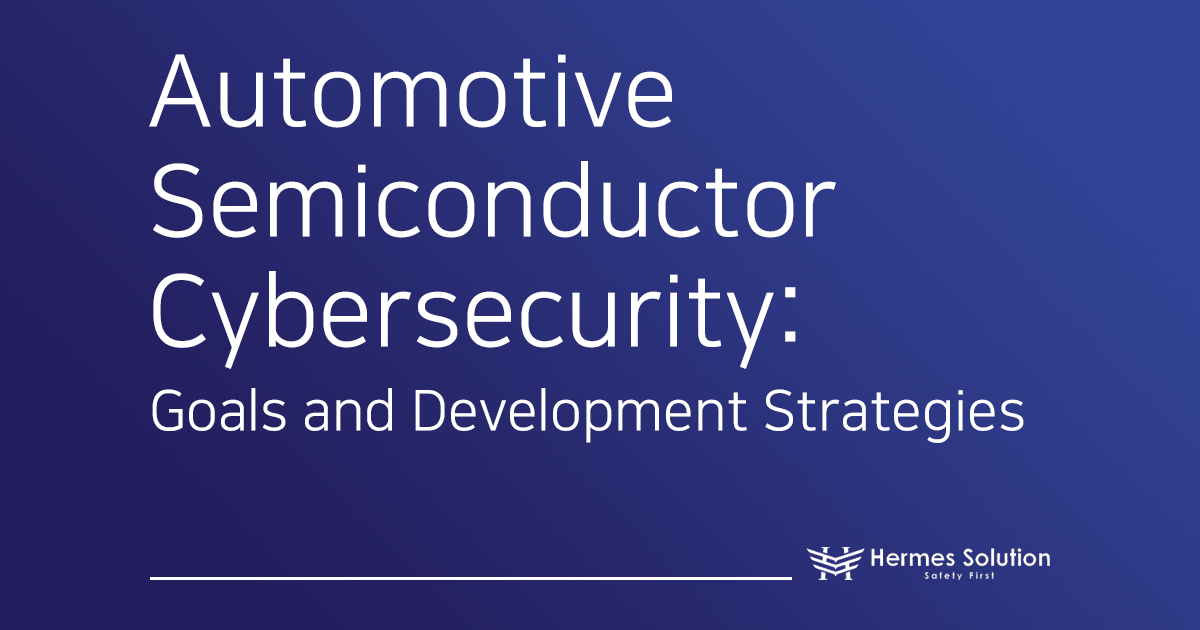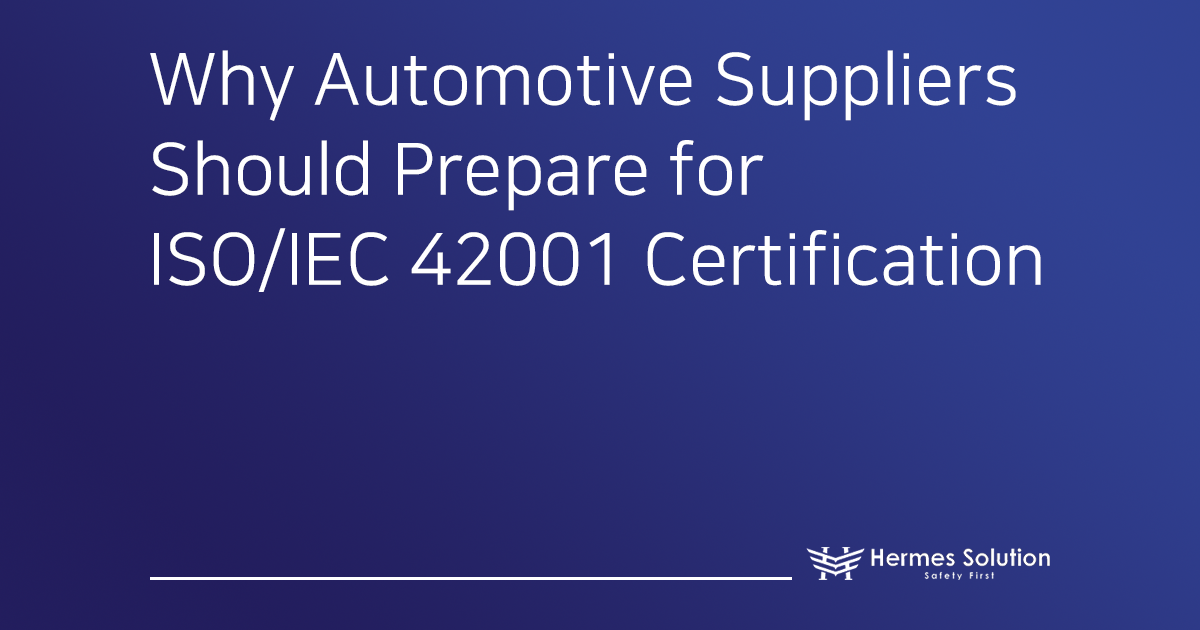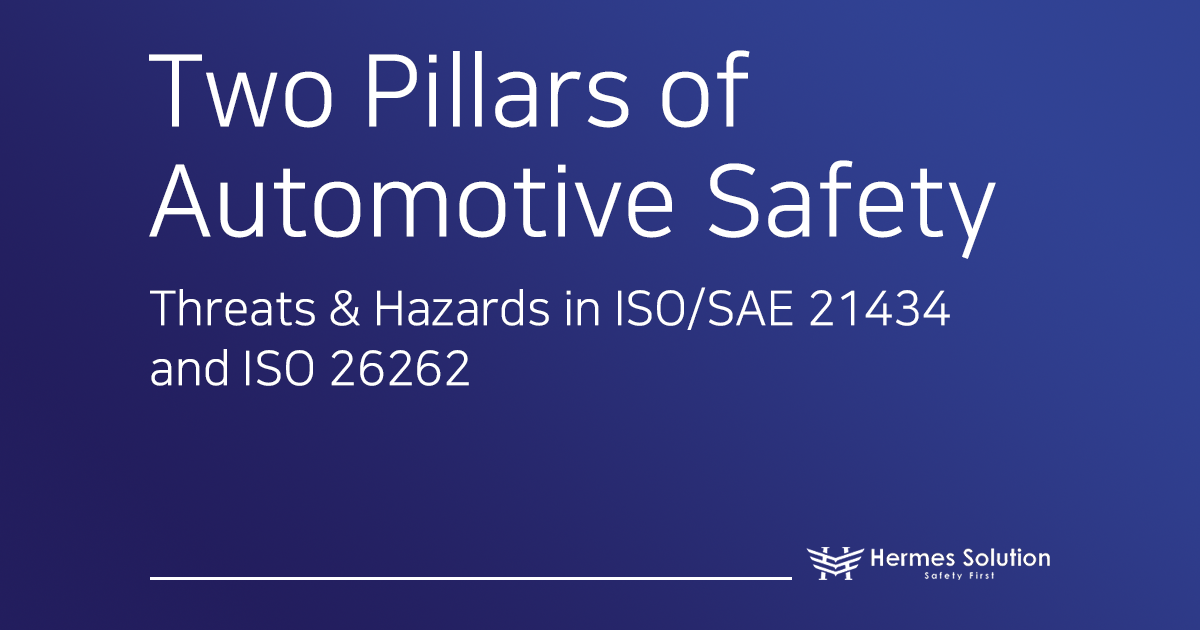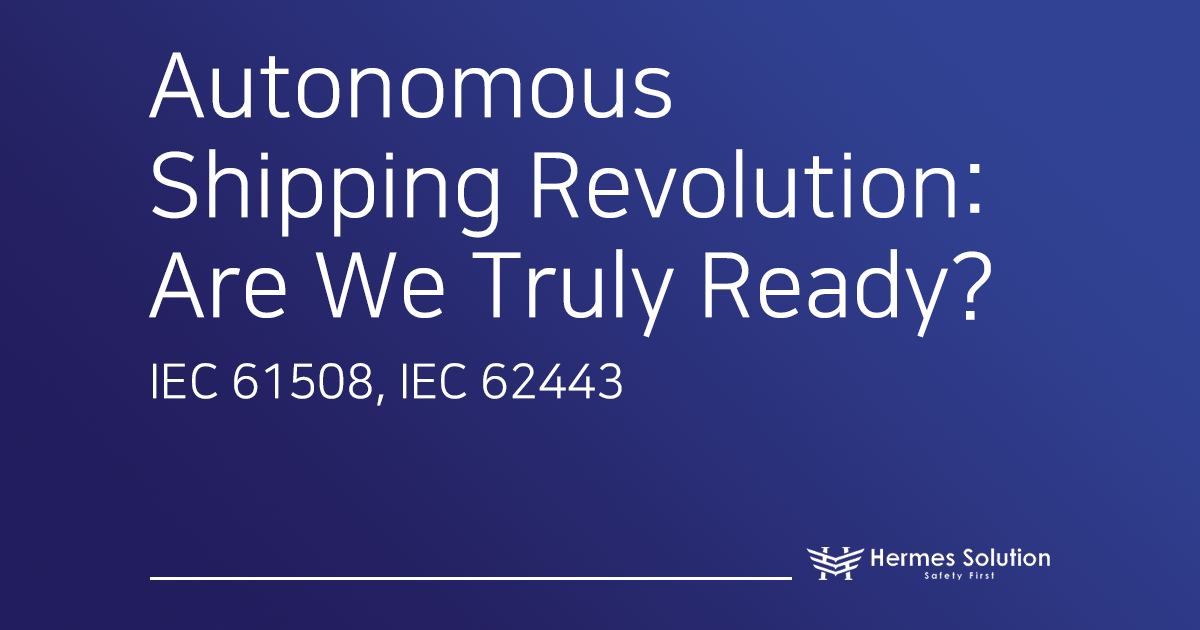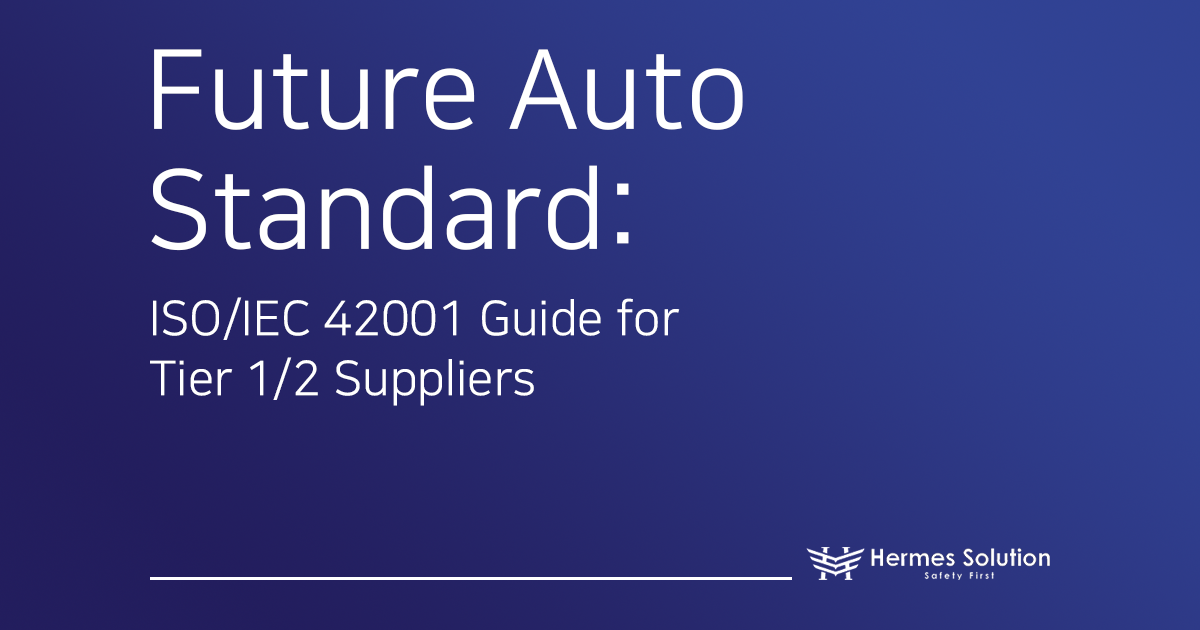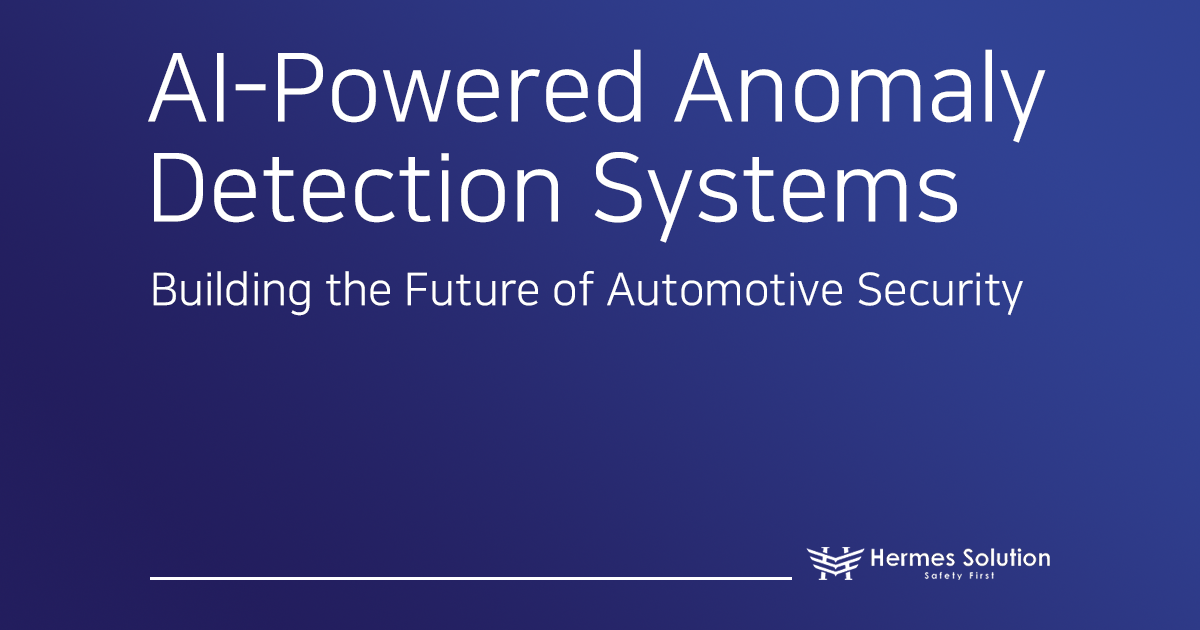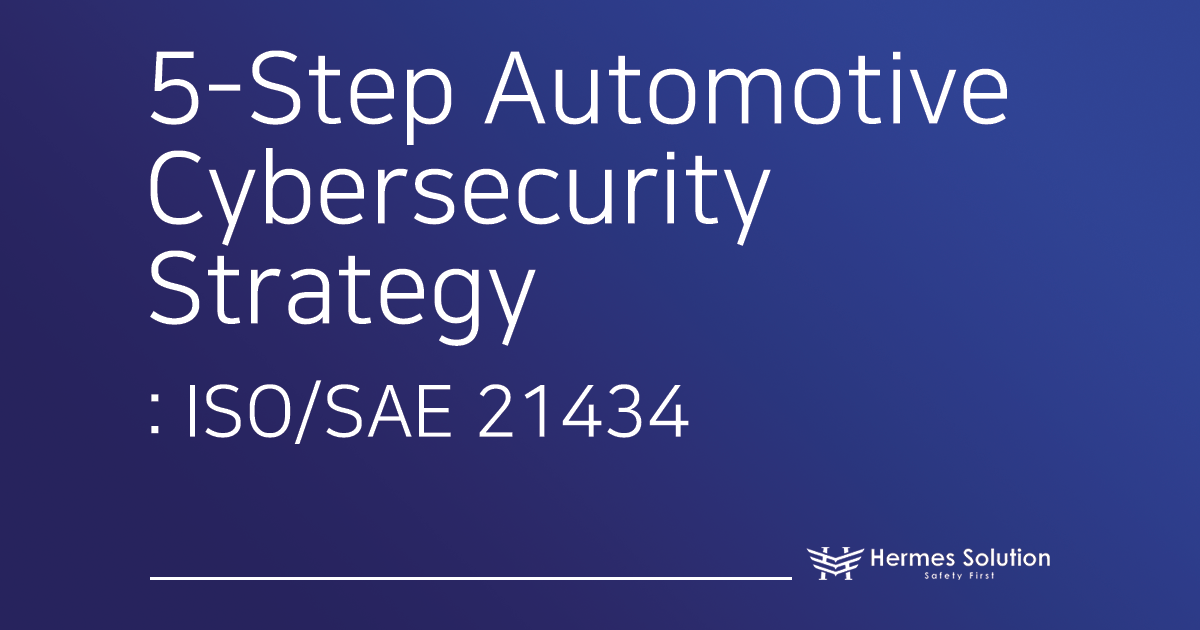1. Paradigm Shift in Automotive Semiconductor Cybersecurity
Today, cars are no longer simple mechanical devices. Whereas vehicles once relied mainly on engines and mechanical parts, they have now become IT platforms on wheels centered on numerous ECUs and software. As connected cars and autonomous driving proliferate, vehicles are continuously linked to external networks via wireless communication, offering new conveniences to drivers and passengers.
This connectivity, however, simultaneously creates new opportunities for attackers. In the past, hacking a vehicle typically required direct access via the OBD-II port; now, remote attacks are possible through wireless channels such as cellular, Wi-Fi, and V2X. Attackers can even target specific models at scale and threaten critical control functions like braking or steering. Consequently, cybersecurity at the semiconductor level is no longer optional—it is essential.
2. Regulatory Environment and Its Industry Impact

In response, strong regulations have emerged across the global automotive industry. Chief among them is UN R155, which since 2022 has been a mandatory condition for new-vehicle type approval in major markets such as Europe, Japan, and Korea. This regulation requires OEMs to establish a Cybersecurity Management System (CSMS) and to manage threats throughout the vehicle lifecycle.
A notable characteristic is that the regulation does not target only OEMs. Through a “regulatory cascade” across the supply chain, semiconductor companies must also certify their own security processes to participate in the market. In other words, cybersecurity has been elevated from an individual feature to a criterion for business eligibility in the automotive sector.
In parallel, the international standard ISO/SAE 21434 has been introduced. If UN R155 defines what must be done, ISO/SAE 21434 explains how to do it. It provides a framework for managing cybersecurity across the entire vehicle lifecycle—from design to decommissioning— guiding organizations to perform security activities suited to their products through a risk-based approach rather than prescribing specific technologies.
3. The Role of TARA (Threat Analysis and Risk Assessment)
A core activity in ISO/SAE 21434 is TARA. Rather than merely listing threats, TARA systematically analyzes which assets may be attacked, the potential impacts if an attack succeeds, and the likelihood of success.
TARA Workflow
Step | Key Activities | Deliverables |
|---|---|---|
Asset Identification | Catalog data, functions, and resources that must be protected | Asset inventory |
Threat Scenarios | Derive threats using methods such as STRIDE | Threat scenario list |
Impact Assessment | Analyze impacts on safety, financials, operations, and privacy | Impact ratings |
Attack Path Analysis | Define the steps an attacker could take | Attack path diagrams |
Likelihood Assessment | Evaluate time, knowledge, equipment, and opportunity | Likelihood ratings |
Risk Determination | Assess risk = impact × likelihood | Risk register |
Risk Treatment | Decide on mitigation, avoidance, transfer, or acceptance | Cybersecurity goals |
Through this process, organizations move beyond the vague notion that “security is needed” to concretely identify which functions must be protected and what technical measures are required.
For example, if TARA confirms that an attacker could manipulate the CAN bus to control the steering ECU, a corresponding cybersecurity goal would be: “Unauthorized messages must be blocked.” During development, this goal is then decomposed into implementable requirements.
Thus, TARA serves as the compass for security development and underpins all subsequent activities.
4. The Need for a Secure Development Lifecycle (SDLC)
In the past, security was often added after development, but retrofitting vulnerabilities late in the process incurs far greater time and cost. The Secure Development Lifecycle (SDLC) addresses this by integrating security from the earliest stages—often referred to as a shift-left approach.
Requirements: Reflect TARA outcomes as explicit security requirements
Design: Apply principles such as least privilege and defense-in-depth
Implementation: Follow safe coding standards (e.g., MISRA C) and use static analysis tools
Testing: Employ fuzzing and penetration testing to uncover unforeseen vulnerabilities
Post-release: Maintain OTA updates, vulnerability management, and incident response
Security does not end at vehicle launch. New threats must be addressed via OTA, and vulnerability/incident processes must be operated continuously. In short, SDLC is a lifecycle-long approach to managing cybersecurity.
5. Hardware Root of Trust and HSM
Security cannot rely on software alone. Software can contain bugs and is susceptible to physical attacks. Therefore, ensuring security at the semiconductor level requires a Hardware Root of Trust (RoT).
This role is provided by the Hardware Security Module (HSM), which creates an isolated security domain within the chip to securely store cryptographic keys, accelerate cryptographic operations, and support secure boot so that only trusted code runs at startup.
Not every ECU requires the same security level. The EVITA project classifies HSMs into three tiers: Full, Medium, and Light. Gateways and V2X modules that interface with external networks should use Full HSM; internal domains such as powertrain and chassis can adopt Medium; and simple ECUs for sensors/actuators can use Light. This approach balances cost and performance.
6. Security Strategies of Leading Semiconductor Companies
The automotive semiconductor cybersecurity market is led by a few global players.
Overview Table
Company | Key Products | Security Features | Strengths |
|---|---|---|---|
N Corp | S32G, EdgeLock | “4+1” security framework; HSE built-in | ISO/SAE 21434 process certification |
I Corp | AURIX TC4x | EVITA Full HSM; integrated functional safety & security | First to obtain ISO/SAE 21434 certification |
R Corp | RH850, R-Car | Scalable ICU-HSM | TÜV-based CSMS operations |
N Corp proposes a “4+1” security framework that provides layered defense from external vehicle communications to internal ECU security. The S32G processors integrate an HSE security engine enabling secure boot, key management, and accelerated network security, while the EdgeLock portfolio delivers security services across the device lifecycle.
I Corp is well known for its AURIX microcontroller series, meeting both functional safety and cybersecurity requirements and being the industry’s first to secure ISO/SAE 21434 process certification. With EVITA Full HSM on-chip, it enables secure key management and cryptographic acceleration.
R Corp offers scalable solutions centered on RH850 MCUs and R-Car SoCs, applicable across diverse ECUs. Its in-house ICU-HSM supports secure boot, communication security, and software update security, with reliability reinforced by a TÜV-certified CSMS.
7. Strategy Going Forward
Automotive semiconductor cybersecurity is no longer a technical option but a baseline requirement for market participation. Compliance with UN R155 and ISO/SAE 21434 is essential, supported by TARA-based risk analysis, SDLC-driven security by design, and hardware-anchored protections such as HSM.
Without close collaboration among OEMs, Tier-1 suppliers, and semiconductor companies, survival in the market will be difficult. In the future, semiconductors without built-in security will have no place, and semiconductor-level security will be both the starting point of vehicle cybersecurity and a core competitive advantage.
Conclusion

Automotive semiconductor cybersecurity has become a core determinant of competitiveness across the industry, going beyond mere regulatory compliance or safety assurance. UN R155 and ISO/SAE 21434, TARA-based risk analysis, SDLC integration, hardware roots of trust, and the latest security solutions from leading semiconductor companies are all part of the same goal: delivering safe and trustworthy future vehicles.
Hermes Solution walks this path with you—helping organizations navigate complex regulations and technical demands. Beyond basic compliance, we partner with you to build tangible cybersecurity capabilities and become a leader in the era of future mobility.
